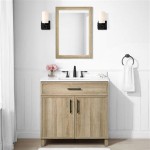ADA Bathroom Sign Requirements 2022: A Comprehensive Guide
The Americans with Disabilities Act (ADA) sets forth accessibility guidelines for public accommodations, including specific requirements for signage within and leading to restrooms. These regulations aim to ensure that individuals with disabilities, particularly visual impairments, can locate and utilize restroom facilities independently and safely. The 2022 updates maintain the core principles of previous versions while clarifying and refining specific aspects of sign design, placement, and content. Compliance with these standards is not merely a legal obligation; it represents a commitment to inclusivity and equal access for all members of the community.
This article provides a detailed overview of the ADA bathroom sign requirements as of 2022, covering key aspects of compliant signage to assist building owners, architects, and contractors in meeting these crucial accessibility standards. Non-compliance can result in legal action and reputational damage, underscoring the importance of understanding and adhering to these guidelines.
Key Point 1: Sign Content and Characteristics
The ADA mandates two types of signage for restrooms: visual signs and tactile signs. These signs serve distinct but complementary purposes. Visual signs provide information for individuals with sight, while tactile signs are designed to be read by touch by those with visual impairments. Both types of signs must adhere to specific requirements regarding content, font, contrast, and finish.
Visual signs must include a restroom symbol, often referred to as a pictogram, which clearly identifies the restroom facility. The universally recognized male and female figures are commonly used, but gender-neutral symbols are also permissible and increasingly preferred to promote inclusivity. The pictogram must be accompanied by text indicating the restroom's designation (e.g., "Men," "Women," "Unisex," "Family"). The text lettering must adhere to specific font requirements, including sans serif fonts and a minimum height determined by viewing distance. The background and text must exhibit a high degree of visual contrast, typically a light character on a dark background or vice versa. Reflective or glossy finishes are prohibited, as they can create glare and reduce readability.
Tactile signs, in addition to the visual elements present on the visual sign, must also include raised characters and Braille. The raised characters must be sans serif and conform to specific height and stroke thickness requirements. Braille must be Grade 2 Braille, which is a contracted form of Braille used to shorten texts and improve reading speed. The Braille must be positioned below the corresponding text and must comply with specific spacing and cell height requirements. Tactile signs must be mounted on the wall adjacent to the latch side of the door and must be positioned at a specific height above the finished floor.
For unisex or single-user restrooms, an additional International Symbol of Accessibility (ISA) may be required. This symbol signifies that the restroom is accessible to individuals with disabilities and must adhere to specific size and color contrast requirements. The ISA is generally blue and white.
The combination of these elements – visual symbols, text, raised characters, and Braille – ensures that individuals with a range of visual abilities can identify and access restroom facilities.
Key Point 2: Sign Placement and Mounting
The placement of restroom signage is crucial for accessibility. Proper placement ensures that individuals can easily locate the signs and understand their meaning. The ADA specifies precise requirements for both visual and tactile sign mounting.
Visual signs identifying permanent rooms and spaces, including restrooms, must be located at the doorway to the space they serve. They should be mounted on the wall adjacent to the latch side of the door. If there is no wall space on the latch side, the sign should be placed on the nearest adjacent wall. The baseline of the lowest tactile character should be a minimum of 48 inches above the finished floor, and the baseline of the highest tactile character should be a maximum of 60 inches above the finished floor. This height range ensures that the sign is within reach and easily readable by individuals using wheelchairs or other mobility devices. The sign should be positioned so that a person can approach within 3 inches of the sign without encountering protruding objects or standing within the door's swing path.
Tactile signs must adhere to the same mounting height requirements as visual signs, ensuring consistency and ease of location for individuals using tactile reading methods. The tactile characters and Braille must be directly adjacent to the corresponding visual elements on the sign, allowing for seamless integration of visual and tactile information. Additionally, the sign must be firmly affixed to the wall to prevent movement or displacement, which could hinder tactile reading.
Temporary signs, such as those used to indicate temporary restroom closures or alternative routes, must also comply with accessibility standards to the greatest extent possible. While tactile elements may not always be feasible for temporary signs, the visual elements, including font, contrast, and placement, should adhere to ADA guidelines. Clear and concise language should be used to communicate the necessary information, and the signs should be positioned in highly visible locations.
Deviation from these placement guidelines can significantly impact accessibility, making it difficult for individuals with disabilities to navigate the built environment and locate essential facilities. Therefore, careful attention to sign placement is paramount to ensuring ADA compliance.
Key Point 3: Specific Considerations for Different Types of Restrooms
While the core requirements for ADA bathroom signage remain consistent, specific considerations arise depending on the type of restroom being identified. Different types of restrooms, such as single-user restrooms, unisex restrooms, and family restrooms, may require additional or modified signage to accurately convey their purpose and accessibility features.
Single-user restrooms, also known as individual restrooms, typically require signage indicating their availability for use by one person at a time. The sign should clearly identify the restroom as single-user and may include a symbol indicating its accessibility. If the single-user restroom is also designed to be accessible, the International Symbol of Accessibility (ISA) should be included on the sign.
Unisex restrooms, which are designed to be used by individuals of any gender, require specific signage to avoid confusion and promote inclusivity. The sign should clearly indicate that the restroom is unisex, typically using the word "Unisex" or a combination of male and female symbols. Many jurisdictions are also adopting more explicitly inclusive symbols and language to further enhance understanding and acceptance. The ISA is essential on unisex restrooms to clearly indicate that they are accessible.
Family restrooms, designed to accommodate families with young children or individuals who require assistance from a caregiver of a different gender, also necessitate specific signage. The sign should clearly identify the restroom as a family restroom and may include a symbol depicting a family with a child. The ISA is also crucial for family restrooms to indicate their accessibility features. Additionally, some jurisdictions may require signage indicating the availability of changing tables or other amenities within the family restroom.
Beyond the core signage requirements, it is important to consider the overall design and layout of the restroom itself. Accessible restrooms should include features such as grab bars, accessible sinks, and sufficient maneuvering space to accommodate individuals using wheelchairs or other mobility devices. These features should be designed in accordance with ADA guidelines to ensure that the restroom is fully accessible and usable by all individuals.
By carefully considering the specific needs of different restroom types and incorporating appropriate signage and design features, building owners and designers can create inclusive and accessible facilities that meet the needs of all users.
Furthermore, it is important to stay current with any updates or revisions to the ADA standards. The Department of Justice regularly provides guidance and clarification on ADA requirements, and it is the responsibility of building owners and designers to ensure that their facilities comply with the latest regulations. Consulting with accessibility experts and conducting regular audits of restroom facilities can help to identify and address any potential compliance issues. By prioritizing accessibility and proactively addressing any shortcomings, building owners can demonstrate their commitment to inclusivity and create welcoming and usable spaces for all members of the community.
In conclusion, understanding and implementing the ADA bathroom sign requirements is essential for creating accessible and inclusive environments. By adhering to the guidelines regarding sign content, placement, and specific considerations for different restroom types, building owners and designers can ensure that their facilities meet the needs of individuals with disabilities and promote equal access for all. Continuous monitoring and adherence to updated guidelines ensures continued compliance and reflects a commitment to an inclusive environment.

Ada Restroom Signs Height Requirements Martin

Ada Restroom Signs Height Requirements Martin
Toilet Room Signs Improperly Mounted

How To Install Ada Compliant Signs Hotelsigns Com

Ada Bathroom Requirements Equipment Spacing More

How To Install Ada Compliant Signs Hotelsigns Com

Ada Sign Requirements 17 Tough Questions Answered

All Gender Accessible Restroom Sign Ny Ct Ada Factory

Womens Bathroom Door Ada Signs With Female Gender Symbol Sign Depot

Design Accessible Bathrooms For All With This Ada Restroom Guide Archdaily
Related Posts







